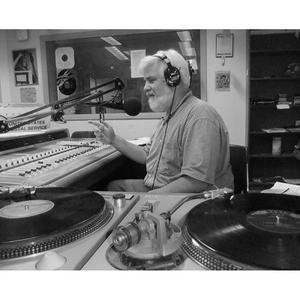Charles Brown
Here’s five hours on blues and jazz singer and pianist Charles Brown.
Charles Brown was born September 13, probably 1920 (usually listed 1922), on the gulf coast of Texas and raised by his educated and religious grandparents. He played piano and sang in church, and excelled as a science student. His high school chemistry teacher, who also moonlighted as a musician, took Charles under his wing, and had Charles play piano with his dance band.
Brown had academic aspirations and attended Prairie View College. After graduation, Brown worked as a research chemist, eventually in government service for the war. When it was time to actually go in to the armed forces Charles was 4-F for a childhood illness. Instead, he left the science field, and the segregated South Brown decided to try his hand as an entertainer and moved to southern California.
The army’s loss was our gain, as Charles blossomed in his musical career. But, in effect, he still contributed to the war effort. During World War II there was a great migration of African-Americans to California, both in the workforce of industrial factories, and servicemen stationed while awaiting shipment to the Pacific. A burgeoning black entertainment scene developed in California to entertain this swelling community.
Brown’s first major engagement was at Ivie Anderson’s Chicken Shack in Los Angeles. Soon he teamed up with guitarist Johnny Moore, and they formed a trio emulating Nat King Cole’s group. (Johnny Moore’s brother Oscar was the guitarist with Cole.) Their “Three Blazers” took the elegant sound of the Nat King Cole trio and infused it with a grittier aspect. At the same time, Brown’s mellow vocal style, influenced by idols like Pha Terrell, offered a refined side of blues singing that struck a responsive chord with popular listeners.
Charles Brown and Moore’s Three Blazers had monster hits such as “Driftin’ Blues” and “Merry Christmas Baby” in the postwar period. Eventually leaving the group, Brown had continued success as a single for a number of years but drifted in to obscurity. He left a string of now forgotten hit records, but a direct influence acknowledged by singers from Ray Charles onward.
In the 1980's Brown was “re-discovered”, becoming a popular attraction at the famous New York nightclub Tramps, featured on an acclaimed PBS documentary, releasing a breakthrough 1986 jazz album “One More For The Road”, and taken on tour by artists like Bonnie Raitt to be exposed to a younger generation. With a base in northern California, and guitarist Danny Caron as musical director with a sympathetic style, Brown had great success once again touring the world and making many fine jazz records for the Muse and Verve labels, until his death in 1999.
We will explore Brown’s tasty, often overlooked, jazz piano playing, and his great blues and ballad singing, sampling the recordings from across his career during this five hour radio broadcast.
originally broadcast March 1, 2015


